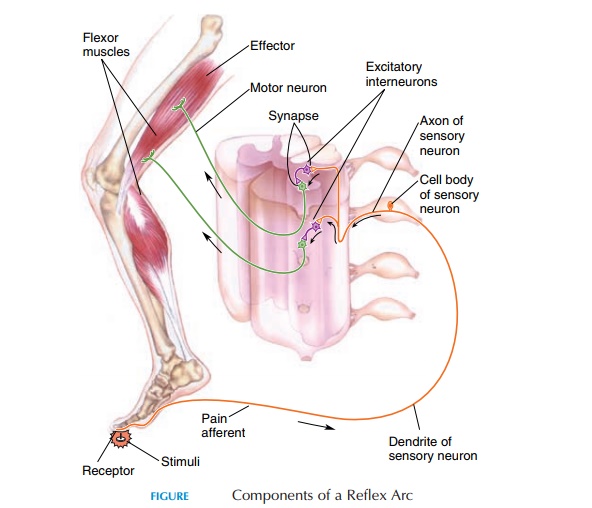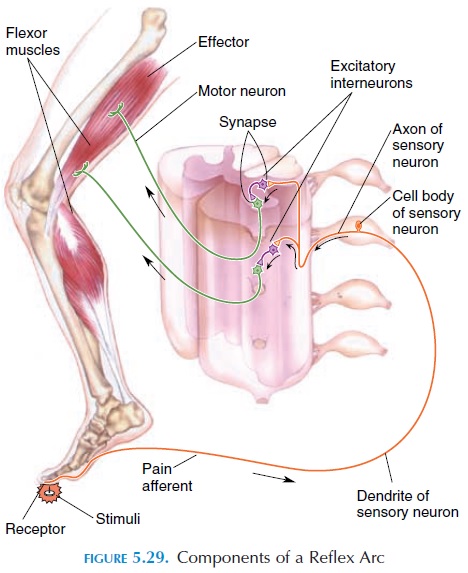Chapter: The Massage Connection ANATOMY AND PHYSIOLOGY : Nervous System
Reflexes - Nervous System

REFLEXES
A reflex is a rapid, automatic response to a specific sensory signal. One characteristic of reflexes is that it is specific and stereotyped in terms of stimulus and response. Such reactions are important for making rapid adjustments in the body.
For a reflex to occur, certain components must be intact. A sense organ or receptor is required to de-tect the stimulus and convert it into action potentials.

An afferent or sensory neuron is needed to transmit the action potentials generated to the spinal cord and brain. The central branch of the sensory neuron has to synapse with one or more interneurons or directly with the efferent or motor neuron. The efferent neuron carries the impulse to the muscle or gland (the effector) it innervates to produce a suitable re-sponse. The path taken by the impulse is known as the reflex arc and it requires all five components (see Figure 5.29).
The simplest reflex arc is one with a single synapse between the afferent and efferent neuron, known as monosynaptic reflex.Reflex arcs in which one or more interneurons are interspersed are known as polysynaptic reflexes.
Related Topics